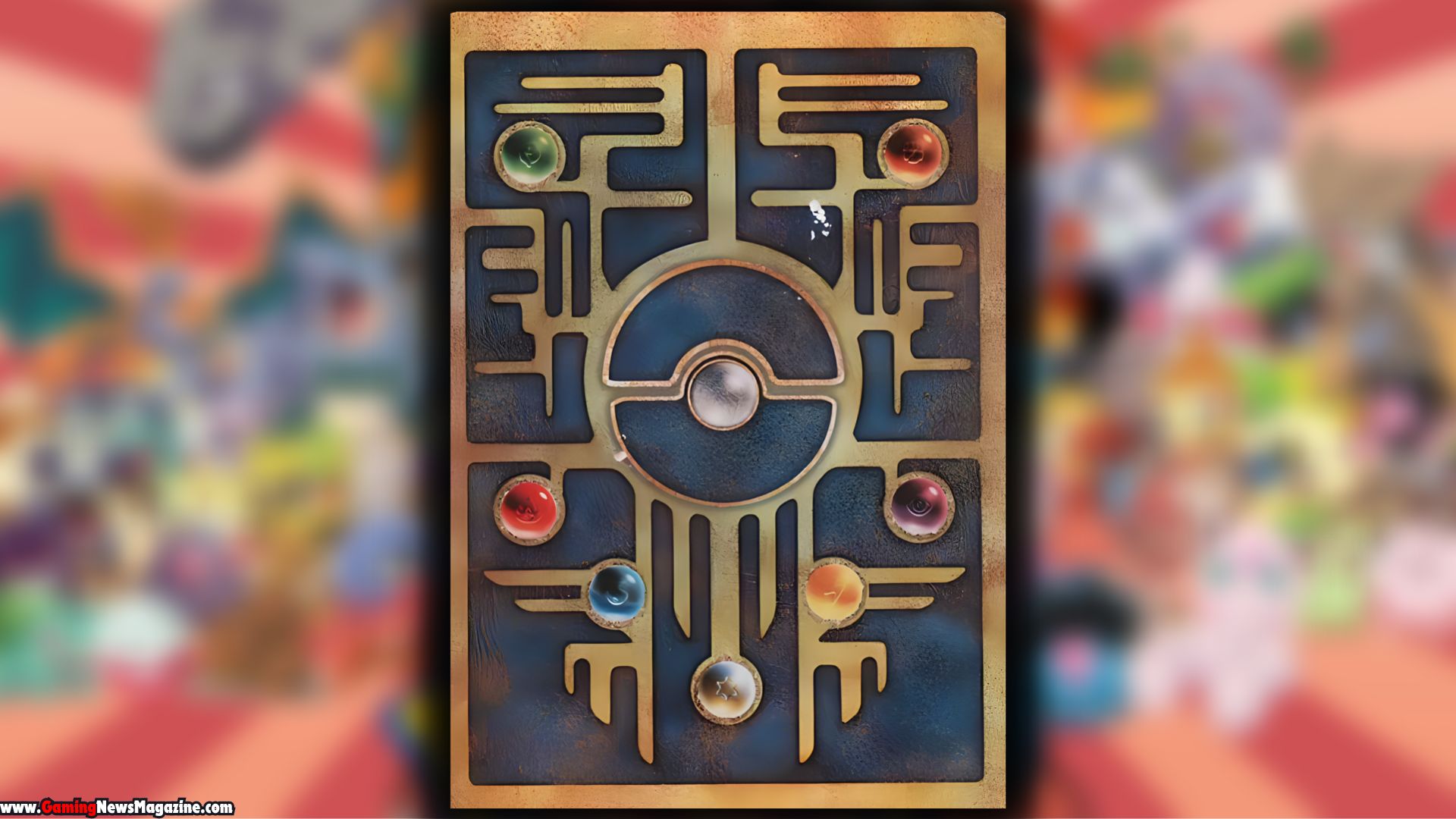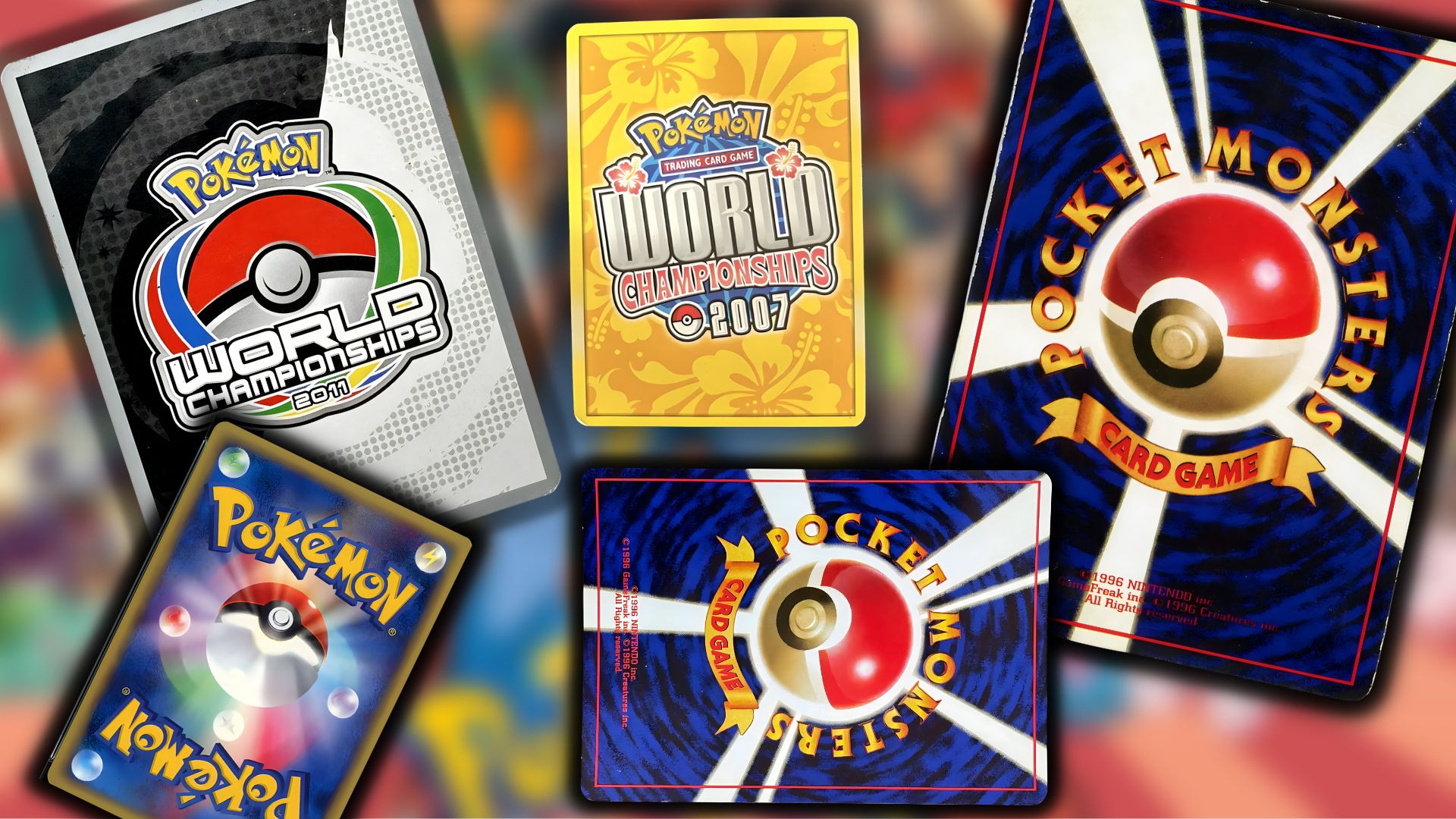History of Back of a Pokemon Card Design
The craze of a Pokemon card goes beyond the character displayed on its front and the strategic advantages it offers in the trading card game. It's not just about collecting, but a journey into the world of Pokemon lore and history. From the glossy finish to the intricate design, every aspect of a Pokemon card tells a story. The back of a pokemon card, often overlooked, holds secrets waiting to be discovered by those who delve deeper. It's a portal to a world of nostalgia, strategy, and excitement that transcends mere cardboard. Step into the realm of Pokemon collectors and uncover the hidden treasures that lie within the unassuming back of a Pokemon card.

Gotta Catch 'Em All! Exploring the 1996 Pocket Monsters Card Game
At the genesis of the Pokemon card craze, the design was simple yet iconic. A bright red backing with a bold yellow Poke Ball in the center was the stamp that meant you were holding a piece of the fledgling empire. This design, which later became the symbol of Pokemon trading, captured the hearts of a generation and set the stage for the card’s astronomical popularity. The vibrant contrast of colors, the crisp lines defining the iconic Poke Ball, and the nostalgia it evokes for many enthusiasts marked the beginning of a phenomenon that would shape the childhood memories of a whole generation of fans. Its simplicity belied the complex world it represented, sparking the imagination of millions and fueling the passion for collecting and trading these pocket monsters.

The Allure of Holographic Cards in the 1997 Pocket Monsters Card Game
The advent of holographic technology revolutionized the game, elevating it to a mesmerizing spectacle. The introduction of holofoil altered the Pokemon card back, transcending its utilitarian role to become an enchanting aspect of the collectible. This enhancement wasn’t merely a visual delight; it symbolized a significant evolution in the card’s significance, elevating it from a mere playing piece to a cherished possession sought after by enthusiasts worldwide.

The Curious Case of the 1998 Pocket Monsters Card Game Vending Series
The introduction of the Vending Machine series marked a pivotal moment in Pokemon card history. It ushered in a subtle yet significant change by introducing the first non-glossy, matte-finished card backs. This unique feature continues to distinguish them to this day. The Vending Machine series not only revolutionized card design but also proved that even minor adjustments to the back design could spark excitement among collectors, establishing a new standard for rarity and desirability in the Pokemon card world.

The English Release of the Pokemon Trading Card Game (1999)
The ’90s phenomenon of Pokemon solidified its position in cultural memory with the highly anticipated release of the English Pokemon Trading Card Game. The iconic red and yellow logo emblazoned on the back of each card not only symbolized the brand but also signified the widespread influence of Pokemon across the globe. It was more than just a collectible; it became a cherished relic of childhoods worldwide, uniting fans in a shared nostalgia for those unforgettable moments spent trading cards and battling with friends.

A Look at the 1999 Pokemon Trainer Decks
Not limited to just a game for collectors and battlers, Pokemon also aimed to support the aspirations of young fans striving to be the best. Through the Trainer Deck series, which included comprehensive game guides and strategies, players were granted insights into the game’s mechanics. The distinctive back design featuring the ‘Trainer Deck’ label not only served as a tutorial but also doubled as a collectible card cherished by fans.

The Mystery of the Ancient Mew Card (2000)
With the release of ‘Pokemon the Movie 2000‘ in theaters, the card game unveiled a promotional card that captured the intrigue with its mysterious yet stunning design. The Ancient Mew card, with its distinctive hieroglyphic-like backside, held more than just visual appeal; it wove a narrative that intertwined with the movie’s storyline, sparking the creativity and curiosity of both cardholders and traders who regarded it as a precious artifact steeped in lore. The card became a symbol of the movie’s enchanting world, fostering a sense of wonder and excitement among fans who embraced its enigmatic charm.

A Look at the 2002 Japanese Pokemon Card Game
While the Japanese release didn’t mark a significant departure in design, it highlighted a notion that had been quietly simmering in the background—the profound significance of ‘original’ Pokemon cards. The design struck a more resonant chord, particularly considering it represented the ‘home’ version of the cherished critters. This sentiment reverberated deeply within the heart of every dedicated collector, underscoring the nostalgic value attached to these iconic cards.

A History of the Pokemon World Championships Card (2004-Present)
The World Championships ignited a fresh wave of enthusiasm within the Pokemon community. Participants and spectators alike were thrilled to engage in intense battles and revel in their shared love for the game.

Moreover, they were rewarded with exceptionally rare and highly sought-after cards, adorned with unique backs that stood as tokens of their participation in an exclusive event.

These cards became cherished souvenirs, symbolizing not just expertise but also a deep commitment to mastering the game on a global scale.

Latest Addition - The Ultimate Premium Collection Metal Card Backs (2021)
In recent years, the Pokemon Company has once again reinvented the card back with the release of the Ultimate Premium Collection. These metal cards, with their unique texture and heft, symbolized a pinnacle of luxury in Pokemon card collecting. While the metal aspect was a departure in material, the design itself held echoes of that nostalgic red and yellow that started it all—a fitting blend of old and new.

The Art Is More Than the Front
In a world fixated on front-facing flashiness and functionality, the saga of the Pokemon card’s backside reminds us that art and design are not just visual elements but powerful tools for communication and community building. The intricate patterns and symbols on the back of a Pokemon card weave a narrative of its own, tracing a journey from the inception of the series to its lasting legacy. Each card, with its unique design, conveys a sense of pride, rarity, and cultural diversity, reflecting the diverse origins of Pokemon creatures. The next time you hold a Pokemon card in your hand, take a moment to turn it over and delve into the depths of its design. Appreciate the subtle details and hidden meanings that lie on that unassuming backside. Through its intricate artistry, the Pokemon card back encapsulates the essence of a global phenomenon that has captured hearts worldwide for over two decades. It serves as a canvas for creativity and storytelling, inviting fans to explore the rich history and lore behind each card.

In conclusion, the history of the Pokemon card back is a tapestry of innovation and nostalgia, blending function with aesthetics in a way that resonates deeply with fans. It sparks conversations about the role of art in popular culture and underscores the profound impact of seemingly small details. The Pokemon card back transcends its physical form to become a portal to shared memories and a bridge between generations of fans. So, the next time a Pokemon card crosses your path, take a moment to cherish its backside, for within its design lies a treasure trove of memories and a testament to the enduring legacy of a cultural icon. And if you thinking that, Are Pokemon Cards Worth Anything Then Click Here !
